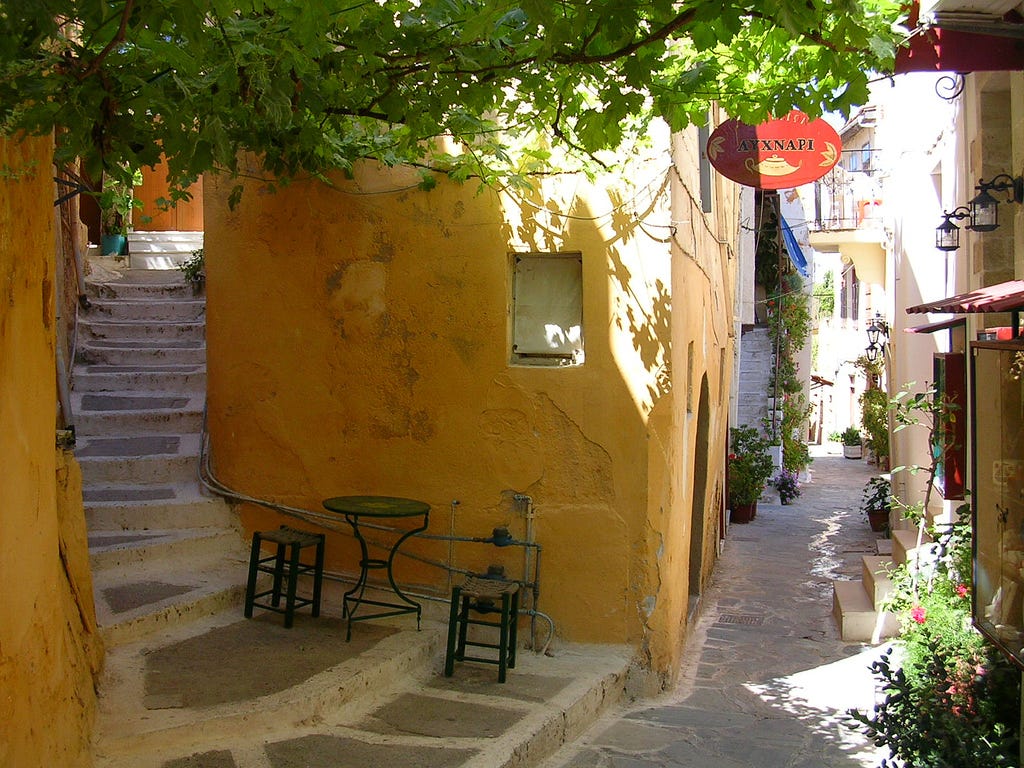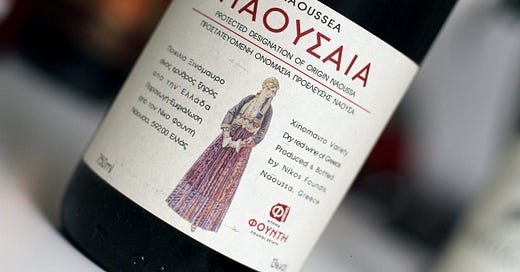12 years of Xinomavro

SUMMER 2003, CRETE. I'm staying in a self-catering apartment hidden away on one of Chania's many labyrinthine alleys. Almost right opposite is a local shop where I stock up on pasta, vegetables and olive oil.
The owner is super friendly and doesn't speak a word of English. On my first visit he points to a giant glass demijohn by the door, which contains some lethal-looking and no doubt homebrewed firewater. "Booooom!" he exclaims, miming a shot being downed.
I laugh, and that's all the encouragement he needs to pour us both a healthy slug. It's every bit as potent as I suspect. "Booooom!" indeed. We repeat this enjoyable ritual a few times over the course of a week - as a way of ensuring my customer loyalty, it beats a Tesco clubcard hands down.
Naoussa Xinomavro
The shopkeeper's DIY raki isn't the only liquid memory I have from that trip - I also explored his modest selection of local and not-so-local wines, including a Boutari Naoussa. At a guess, maybe a '97 or '98. This rich, savour…
Keep reading with a 7-day free trial
Subscribe to The Morning Claret to keep reading this post and get 7 days of free access to the full post archives.




